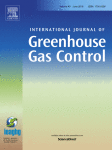 Authors: Jozsef GASPAR, Philip Loldrup FOSBØL
Authors: Jozsef GASPAR, Philip Loldrup FOSBØL
Reference: International Journal of Greenhouse Gas Control, vol. 49 (2016), pp. 227–238
Abstract: “Piperazine presents a great potential to develop an energy efficient solvent based CO2 post-combustion capture process. Recently 8 molal piperazine (PZ) has shown promising results, however it faces operational challenges due to limited solid solubility. The operating range can be extended by decreasing the concentration of PZ and/or increasing the lean loading. However, optimal process conditions must be determined accounting for heating and cooling demands plus solvent re-circulation.In this paper, we identify and generalize trends of performance for a broad range of operating conditions: 1.8–9 m PZ/kg water (molal) and 0.2–0.6 lean loading for absorption and desorption in both, open and closed-loop simulation. We pinpoint scenarios where intercooling significantly improves the performance of the post-combustion process. The energy penalty is minimized as part of the closed-loop multivariable optimization. The results are created in Aspen Plus using the hybrid CAPCO2 rate-based user model…”
DOI: 10.1016/j.ijggc.2016.03.009
Comments: the authors states in section 2.3 that “the hybrid CAPCO2 in-house rate-based model is implemented to simulate CO2 absorption and desorption combined with Aspen Plus built-in unit operations. The interface between Aspen Plus and CAPCO2 is CAPE-OPEN.” So the authors carried simulations with CAPCO2, a CAPE-OPEN Unit Operation developed at CERE, wthin Aspen Plus. They were able to perform multivariable closed-loop optimization of the piperazine CO2 capture process. A full scale study of a process design was performed with a CAPE-OPEN Unit Operation providing advanced modelling technology and built-in unit operations typically found in any library of a process simulator.
CAPE-OPEN related papers cited in text: none
